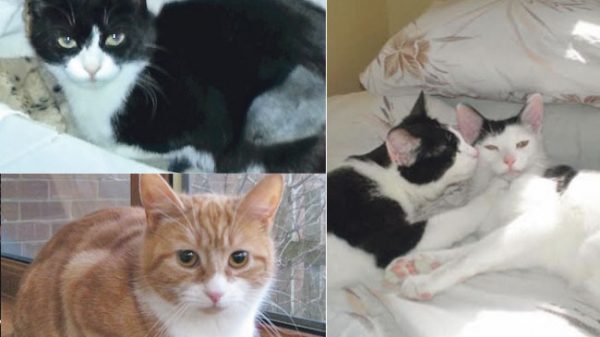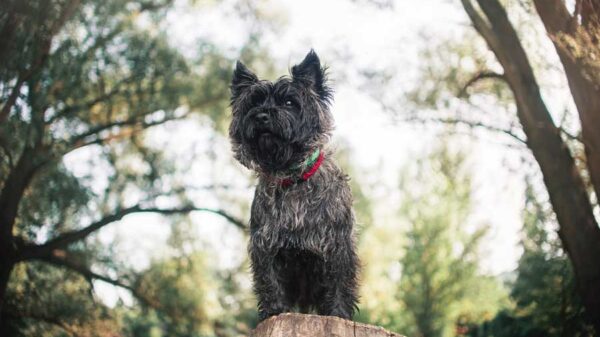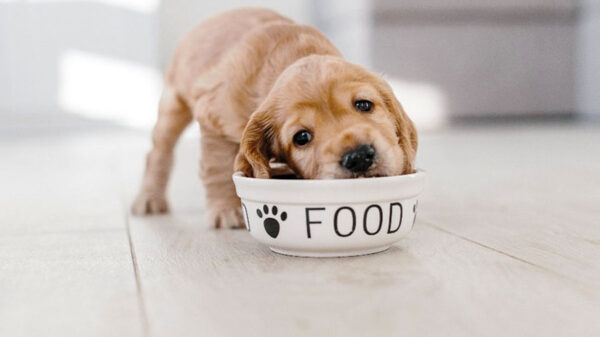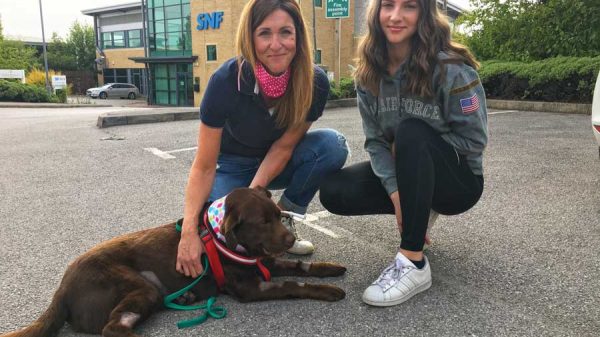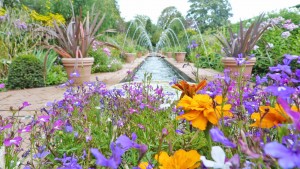HISTORY: Hunting was a classic sport in medieval France and the Basset Hound is first mentioned in the 16th century. An early text on hunting written by Fouilloux in 1585 mentions the word ‘basset’ along with an illustration considered to be the first drawing of the breed. It is a woodcut showing a sportsman accompanied by his ‘badger dogs’ and the text of the book gives advice on training the dogs for badger hunting.
The friars of a French Abbey St Hubert are said to have been instrumental in selective breeding of hounds to create a slower moving, lower set dog that could be followed on foot. By the 1700’s this meant that Basset Hounds were used extensively in France, although their appearance differed across the regions. In the 1800’s the breed was exported to England and then the United States, though the Revolution in France saw a dispersal of the breed from the kennels of the aristocracy there due to changes in the lifestyle that this period brought. A quote from the book Chiens de Chasse written by M. Robert around 1850 says “The Basset will hunt all animals, even boar and wolf, but is especially excellent for the chasse a tir of rabbits and hares.” (chasse a tir = shooting with the aid of hounds).
By this time, two of the largest Basset breeders in France were producing dogs that were different in the head and eye area, one with a broader skull, shorter ears and rounder more prominent eyes. These dogs were lemon and white in marking and were bred by M. Lane. The other Basset type bred by Count Le Couteulx had narrower heads, a more sunken eye and down faced look. These were tricoloured and because of this were more popular. A pair of the Le Couteulx type were imported to England in 1866 by Lord Galway, and the following year produced a litter of five pups. However, no interest in the breed was raised until 1874 when Sir Everett Millais imported a hound named ‘Model’. He embarked on a breeding programme at his own kennels and those of Lord Onslow and George Krehl, and in 1875 was the first to exhibit the Basset at a dog show in England. Because of this, Sir Everett Millais is considered to be the father of the breed in this country. A few years later, the breed increased further in popularity when Queen Alexandra kept Basset Hounds in the royal kennels.
HEIGHT: Males 12 – 15 inches (30 – 38 cm) Females 11 – 14 inches (28 – 36 cm)
WEIGHT: Males 50 – 65 pounds (23 – 29 kg) Females 45 – 60 pounds (20 – 27 kg)
LIFESPAN: About 10-12 years
CLASS: Hound
HEALTH: Diet is important in this breed carrying excess weight can put a strain on the legs and spine. This can result in lameness and eventual paralysis. Prone to bloat, meals should be given two or three times a days instead of one large meal. If they do eat a large portion they should be kept eye on for several hours afterwards for any signs of bloat. Ears should be cleaned regularly to avoid infections.
COAT: The coat is short smooth and dense with lots of loose elastic skin.Shedding throughout the year. The colours of the Basset are Bi or Tri Coloured with many combinations of Back and white with different shades of red,brown and rarely grey.
TEMPERAMENT: The Basset Hound is sweet, gentle, devoted, peaceful and naturally well-behaved dog. It fits into family life well. Their temperament is affectionate and friendly. It can be stubborn and needs an owner who is confident,consistent and patient. With the correct training they are obedient and will learn the the rules of the house. Basset’s naturally pick up scents and like to follow their noses so can sometimes not hear a recall, only let them off the lead in safe areas.
Viewpoint of dogs owner, by Lesley-Ann
Rhona’s love of dogs all started when as a child her parents found a stray dog and brought it home.Since then she has had many dogs over the years and finds that the companionship and affection a dog offers is so rewarding.
For her, dogs are all part of family life but she says for anybody who can give a dog a good home and maybe feels they need companionship her motto is “if you want a life get a dog.”
Four years ago when sadly her Labrador had lived out his full life, Rhona missed not having a dog – “the house was so empty” she said. Her son and daughter in law knowing how much she wanted another dog went to a rescue centre. There with his big sad eyes staring at them was Alfie, a Basset Hound. After a telephone call to Rhona, Alfie was rescued.
He was 2yrs old and soon settled in his new home. “Alfie is a very cheeky chappie and loves sniffing around. He will eat anything he finds, once eating a full portion of frozen fish and chips from the kitchen work top. He loves playing in the house and garden with his squeaky ball and will eagerly fetch it out of his toy box when I tell him to. He also loves chasing the squirrels that visit our garden but fortunately he never catches them.
On his daily walk he is friendly to everyone he meets. He is let off the lead and happily plays with his two girlfriends. After he’s all played and sniffed out, relaxation time is another favourite part of the day. Sharing this together I just say ‘Cuddle Time’ and we both rest on the sofa and watch TV.”
For anyone considering the breed Rhona says “they are strong on the lead, a sturdy dog and I would only let a Basset off in a safe area in case they pick up a scent. They do moult all year but in all, this is a wonderful affectionate breed and an absolute joy to have.”

